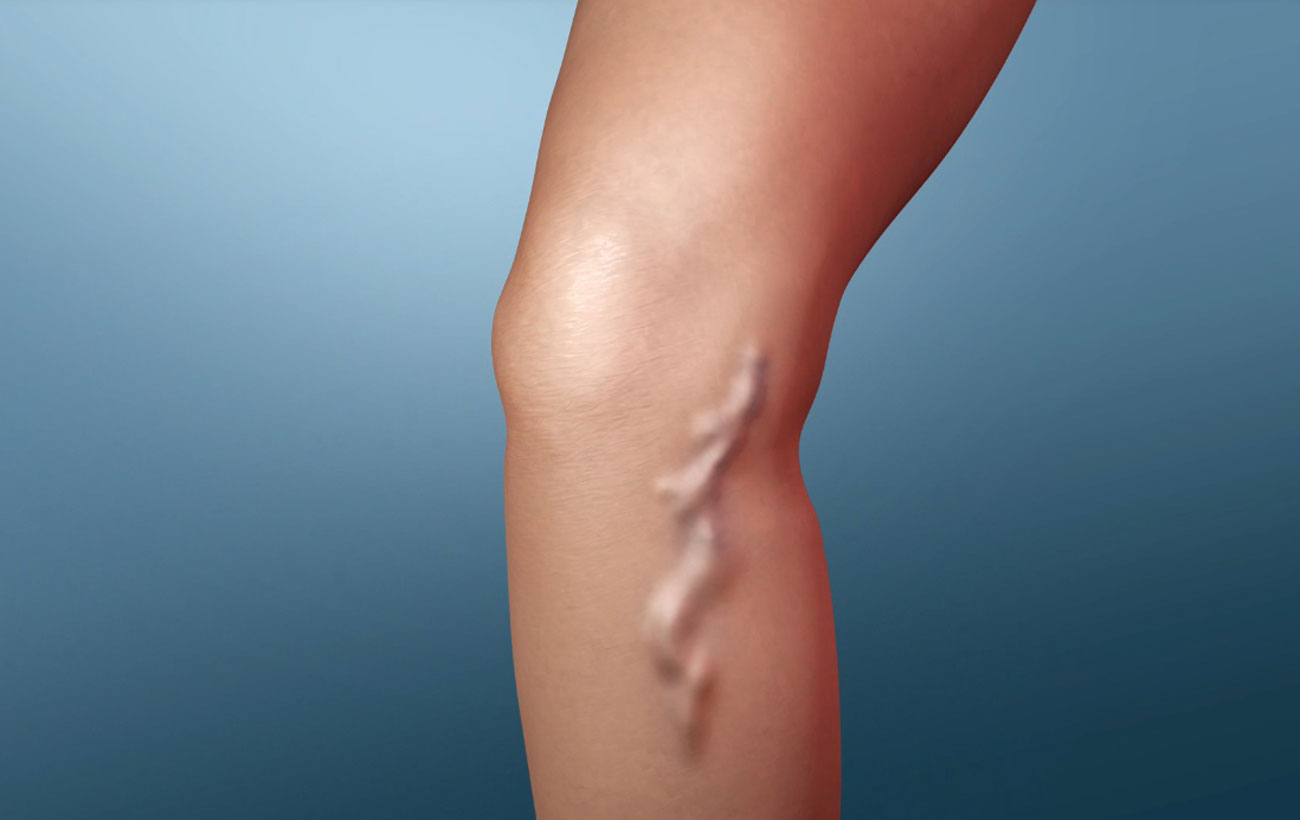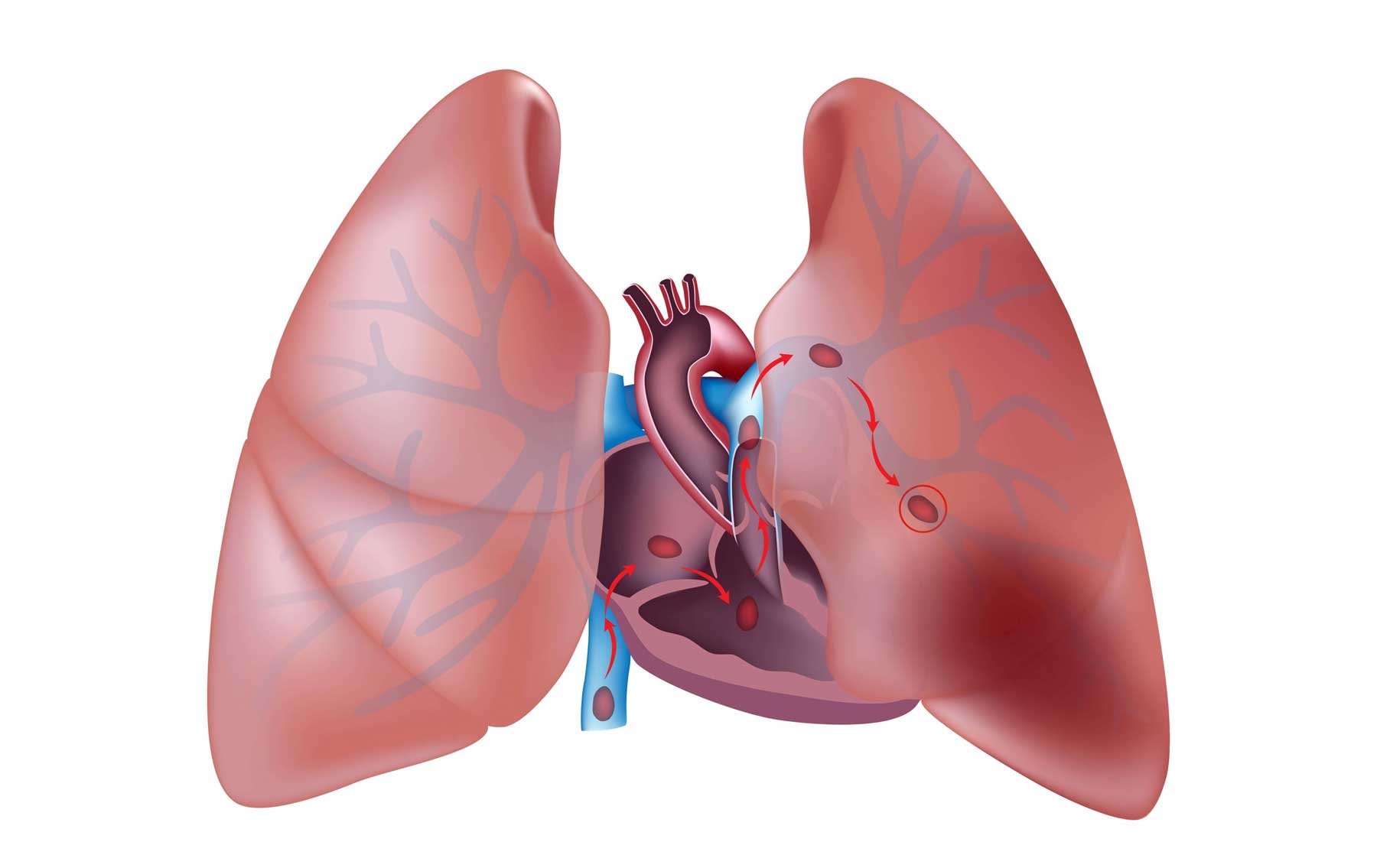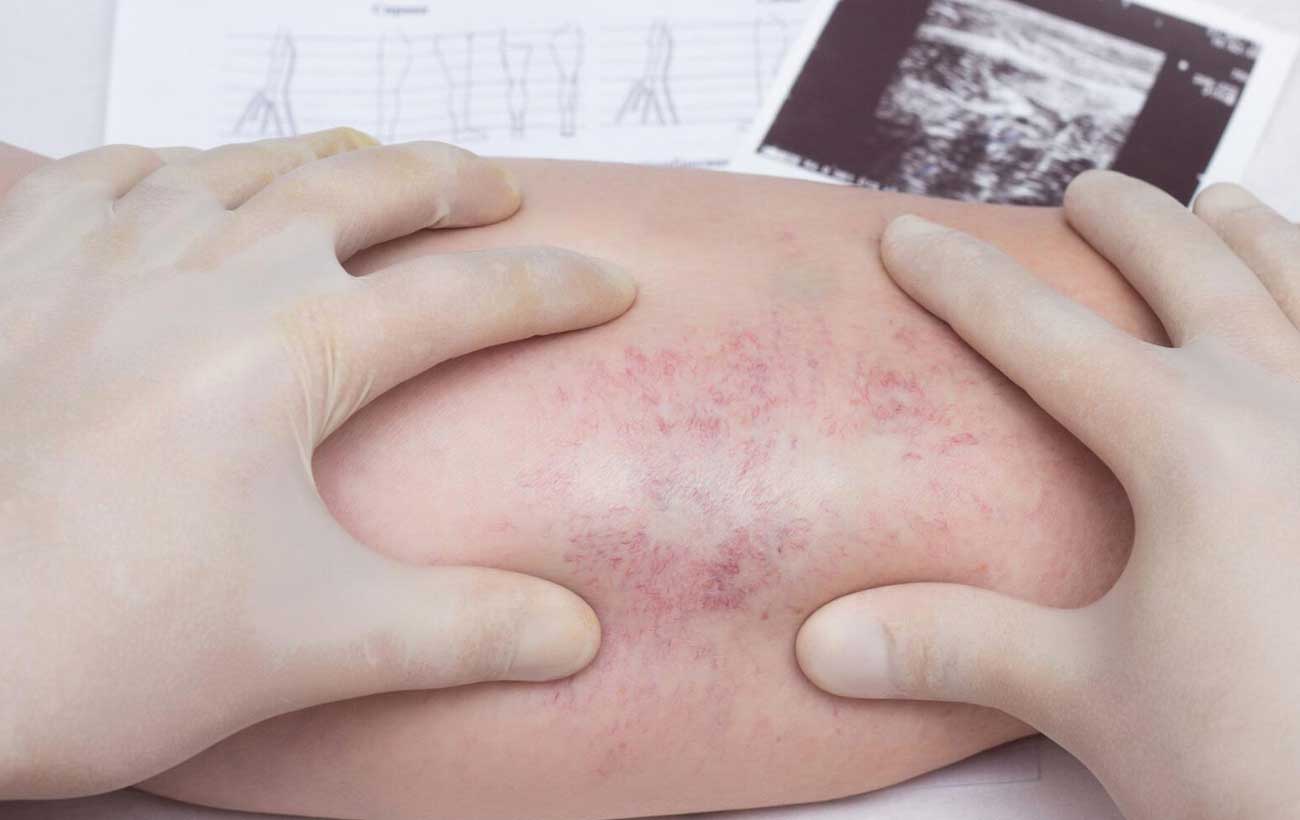Deep Vein Thrombosis Thrombosis is the formation of a blood clot (thrombus), which can partially…

Varicose Veins
Varicose veins are veins directly beneath the skin that have become stretched and twisted over time. This condition usually occurs in the legs when veins lose their elasticity and widen, causing the edges of the valves inside the veins to separate. The veins are then unable to return blood to the heart, causing blood to collect in the veins, widening them further.
Varicose veins are often visible because they lie directly under the skin. Although they are often unsightly, varicose veins seldom cause serious symptoms or health problems. Some people inherit a tendency to develop severe varicose veins. Varicose veins in the legs often result from excess pressure caused by standing for long periods. In severe cases, blood can clot on the inflamed, roughened walls of varicose veins, which can lead to thrombophlebitis, a more serious condition.
Blood flow in normal veins and in varicose veins
Varicose veins occur when the valves in the veins are no longer able to close properly, which interferes with the ability of the veins to return blood to the heart. Blood flows backward through the open valve, increasing pressure inside the vein and causing it to widen and stretch.
Symptoms
Varicose veins usually appear bluish and swollen and are more prominent when you are standing. They usually occur at the back of the calf or on the inside of the leg between the ankle and the groin. Varicose veins can also occur in the rectal area, in the vagina during pregnancy, or where the esophagus meets the stomach in advanced cases of cirrhosis of the liver.
A varicose vein in the leg may gradually enlarge. The vein may become tender to the touch, and the skin above it or at the ankle may begin to itch. The entire leg may ache, especially when you stand for long periods. Your feet may become swollen after standing for a short period and your shoes may seem very tight by the end of the day. During pregnancy, varicose veins may worsen because of increased pressure in the abdomen. Symptoms usually do not worsen if only superficial veins are affected. But when deep veins are also involved, circulation can be impaired, causing persistent leg swelling and a brownish skin discoloration, especially near the ankles. An itchy rash may develop near the affected vein.
In some people, varicose veins can significantly reduce the supply of blood to the tissues, causing the skin to break down and form an ulcer. A varicose ulcer will not heal until the vein has been treated successfully.
Treatments
Your doctor may recommend that you wear elastic support stockings to help improve circulation. You will need to put the stockings on every day, before you get out of bed. Ask your doctor or a nurse to show you the correct way to put them on. Some people find the stockings uncomfortable, especially during hot weather. If your varicose veins are causing discomfort or pain, sit or lie down with your legs elevated above the level of your chest. This will help the blood flow back toward your heart from your ankles and feet.
If you cut the skin over a varicose vein and it begins to bleed, lie down as quickly as possible (no matter where you are), raise the affected leg, and keep it raised. The bleeding should slow immediately. Then, using a clean cloth, place moderate pressure on the wound. After the bleeding has stopped, seek immediate medical attention to have the wound cleaned and bandaged.
Do not attempt to treat a varicose ulcer or a rash on your leg, and never scratch an itching varicose vein. See your doctor for treatment. He or she will probably recommend support stockings or soothing dressings to relieve skin irritation. If you have both deep and superficial varicose veins, your doctor will probably recommend that you wear an elastic stocking on the affected leg and avoid standing for long periods.
Surgery is usually the most effective treatment for varicose veins that are causing symptoms. The most common type of surgery involves removing the affected veins from the leg in a procedure called stripping. After the damaged veins are removed, the remaining small veins quickly enlarge and take over the work of the damaged veins. For surgery to remove varicose veins, a person usually receives epidural anesthesia. The procedure may be performed in an outpatient facility, or you may need to stay overnight in the hospital.
Sclerotherapy is a nonsurgical treatment for varicose veins in which a doctor injects a small amount of an irritant solution directly into a damaged vein, closing it off to blood flow. The blood then reroutes itself through healthy veins nearby. Treatment is usually completed in two or three visits to an outpatient facility or a doctor’s office.
After undergoing stripping or sclerotherapy, you will need to wear support stockings for about 6 weeks. Your doctor will recommend that you walk as much as possible, avoid standing for long periods, and frequently sit with your legs elevated above the level of your chest.



